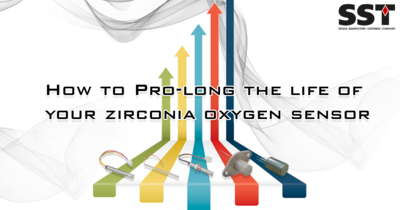
Contact Details:
SST Sensing Ltd
5 Hagmill Crescent
Shawhead Industrial Estate
Coatbridge
Lanarkshire
ML5 4NS
United Kingdom
Tel: +44 (0) 1236 459020
Fax: +44 (0) 1236 459026
Send Enquiry | Company Information

Pro-longing the life of your Zirconia oxygen sensor – Helpful hints and tips
Product News Monday, November 27, 2017: SST Sensing Ltd
This article gives an overview of helpful hints on how to pro-long the life of SST’s Zirconia Oxygen Sensors. The application in which the zirconia oxygen sensor is operating influences the life of the sensor. To ensure the sensor does not fail prematurely, the following hints and tips should be considered:
Fail Safe Operation And Sensor Asymmetry One of the main benefits of the dynamic and active cell employed within the oxygen sensor is that it is inherently fail safe. The continual cycling and measuring of the generated Nernst voltage is effectively the heartbeat of the sensor, if this stops something fatal has occurred within the cell. This can very quickly be detected by the interface electronics
Refer to the Zirconia Sensor Operating Principle and Construction Guide for details.
Operating In Aggressive Humid Environments When operating the zirconia oxygen sensors in warm, humid environments it is important the sensor remains at a higher temperature than its surroundings, especially if there are corrosive components in the measurement gas. During operation this is less of an issue as the heater operates at 700°C, however this means when the sensor or application is being powered down the sensor heater must be the last thing to be turned off after the temperature of the surroundings have suitably cooled. Ideally the sensor should be left powered or at a lower standby voltage (2V typically) at all times in very humid environments.
Failure to adhere to these rules will result in condensation forming on the heater and sensing element. When the sensor is re-powered the condensation will evaporate, leaving behind corrosive salts which very quickly destroy the heater and sensing element as illustrated in the image to the left. Note how the sensor’s external metalwork looks completely normal.
Protecting From Excessive Moisture In environments where excessive moisture or falling water droplets are likely, the sensor should be protected from water reaching or falling directly onto the very hot sensor cap as this can cause massive temperature shocks to the cell and heater. Popular methods include a hood over the sensor cap or for the sensor to be mounted in a larger diameter cylinder.
At a very minimum the sensor cap should be angled downwards in the application as this will deflect any falling moisture and prevent the sensor cap from filling with water.
Using The Sensor With Silicone Zirconia oxygen sensors are damaged by the presence of silicone in the measurement gas. Vapours (organic silicone compounds) of RTV rubbers and sealants are the main culprits and are widely used in many applications. These materials are often made with cheaper silicones, that when heated still outgas silicone vapours into the surrounding atmosphere. When these vapours reach the sensor, the organic part of the sensor will be burned at hot sensor parts, leaving behind a very fine divided Silicon Dioxide (SiO2). This SiO2 completely blocks the pores and active parts od the electrodes. If RTV rubbers are used we advise using high quality, well cured materials.
